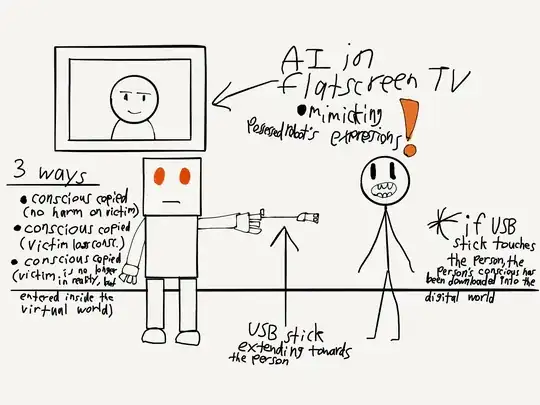Nope.
Complexity
Brains work through a variety of communications methods. Some are electrical, some are chemical. To digitize a brain, you'd basically need to make a CT scan of the target's brain at such a high resolution that it captures all of the brain's neurons in their 3D relation to each other and the exact position of all neurotransmitters in relation to the neurons that are in motion at the time of the scan. And this scan would need to happen very quickly, since the entire 3D map would be changing constantly. If the scan took more than a second or two, your scan has probably introduced too much corruption to be usable.
There's no way to build a USB-enabled device that scan the brain, map out all of those biological components in a 3D space, and then transmit them. Your brain scanner has to map out every molecule in your target's head, convert each molecule to a digital representation of what the molecule is and where it is, and then store it somehow until it can be sent through your USB port.
Size of your data
I do not have the means to give an accurate picture of how much data this brain-scan comprises. But to put it into perspective, this question says human DNA occupies roughly 725 MB of data. Nature says there are roughly 86 billion neurons in the average human brain. This link says DNA is roughly 0.9% of cell weight. Some back-of-the-envelope extrapolation from this tells me that the brain is going to be at least 6,300 Exabytes of data. Probably more.
Bandwidth
Another issue you face is bandwidth. Currently, USB is at version 3.1. A real-world test showed that it takes about 76 seconds to copy 36.7 GB via USB 3.1. At these speeds, it would take you 443,957 years to copy off your brain scan via USB.
What you need
You're going to need to invent a long chain of new technologies here.
- Scanners that can do molecular-scale identification instantly in real-time with exact internal location tracking of each molecule.
- Computing power and algorithms to compress your data from exobyte scale down to something manageable, like a few GB at most.
- Data transfer protocols far superior to existing USB to send the massive data quickly.
- All of this on a scale that is portable.
- Oh, and is able to do the scans without destroying the target brain. I mean, unless destroying the target is okay...
